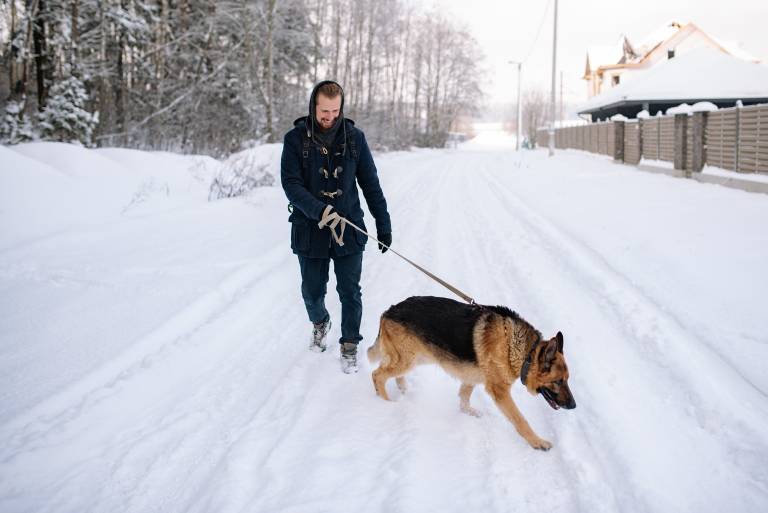What Are The Final Stages Of Cushing’S Disease In Dogs?
Post Date:
December 10, 2024
(Date Last Modified: December 10, 2024)
Cushing’s disease, known as hyperadrenocorticism, presents a significant health challenge for many dogs, especially those in their senior years. This condition arises when the adrenal glands produce excessive cortisol, a hormone essential for various bodily functions. Recognizing the signs of advanced Cushing’s disease is crucial for pet owners aiming to provide optimal care for their beloved companions.
Symptoms of Advanced Cushing’s Disease
As Cushing’s disease progresses, dogs may show a variety of symptoms that can severely affect their quality of life. Changes in behavior, physical appearance, and overall health become more pronounced, signaling the need for urgent medical attention.
Increased Thirst and Urination
One of the most common signs is increased thirst and urination. Dogs may drink large quantities of water and require frequent bathroom breaks, leading to accidents indoors. This excessive thirst often coincides with a heightened appetite, which can result in weight gain. Yet, many dogs may still appear thin due to muscle wasting, creating a perplexing contrast.
Coat and Skin Changes
Visible changes in a dog’s coat are also significant indicators of advanced Cushing’s disease. Owners may notice thinning, brittleness, or patchiness in their dog’s fur. Skin may darken or take on a greasy texture, hinting at the hormonal imbalance caused by the disease. Some dogs may develop skin infections or lesions, further reflecting their declining health.
Behavioral Shifts
Behavioral changes frequently accompany physical symptoms. Many dogs become lethargic and lose interest in activities they once enjoyed, which can be heartbreaking for their owners. Mood fluctuations may also be evident, with some dogs becoming irritable or anxious, while others may seek excessive affection. These emotional shifts highlight the profound impact of the disease on both the dog and the owner.
Health Complications
As the disease progresses, dogs may face additional health complications, including diabetes mellitus, urinary tract infections, and hypertension. These secondary issues can worsen the symptoms of Cushing’s disease, necessitating regular veterinary check-ups to monitor overall health and adjust treatment plans as needed.
Weight Changes
Weight loss becomes a concerning sign in the late stages of Cushing’s disease. While some dogs may gain weight from increased appetite, others may suffer from muscle wasting, leading to significant weight loss. This contrast can be concerning, indicating that the body struggles to cope with excess cortisol.
Emotional Well-Being
The emotional toll on both dogs and their owners can be profound. Witnessing a beloved pet endure a debilitating condition is heart-wrenching. It is vital for pet owners to lean on their support systems during this challenging time. Engaging with veterinarians or connecting with other pet owners facing similar struggles can provide comfort and understanding.
Treatment Options
Treatment for advanced Cushing’s disease varies based on the individual dog’s needs and the severity of the condition. Some dogs may require medication to manage symptoms and help regulate cortisol levels, while others may benefit from dietary adjustments or more frequent veterinary visits. Collaboration with veterinarians ensures the development of the most suitable treatment plan.
Quality of Life Considerations
As the disease advances, difficult decisions regarding a pet’s quality of life may arise. Assessing overall well-being involves considering pain levels, mobility, and appetite. Honest conversations with a veterinarian can clarify these challenging moments, with the focus on maintaining the dog’s dignity and comfort.
Providing Comfort
Creating a comforting environment can greatly benefit a dog in the final stages of Cushing’s disease. A warm, quiet space can help them feel safe, while a consistent routine fosters a sense of stability. Simple pleasures, such as gentle massages or favorite toys, can strengthen the bond between pet and owner.
Monitoring Health
Vigilantly monitoring a dog’s health is essential. Keeping a journal of symptoms, behavioral changes, and medications can facilitate discussions with the veterinarian, providing valuable insights for informed decision-making regarding treatment options.
Unique Experiences
Every dog is unique, and the progression of Cushing’s disease can vary widely. Symptoms and timelines differ based on individual health factors, making it challenging for owners to predict what to expect. Educating oneself about the disease empowers owners to advocate effectively for their pet’s needs.
Navigating the final stages of Cushing’s disease in dogs can be emotionally taxing. Recognizing the symptoms and changes that may arise helps pet owners deliver the best possible care. While difficult, showing compassion and love significantly impacts a dog’s experience with this disease. Creating meaningful moments, no matter how small, can foster joy amidst the challenges, making each shared moment precious. For pet owners facing Cushing’s disease, being informed and nurturing a loving environment can help ease the burden and deepen the bond with their furry companions.






